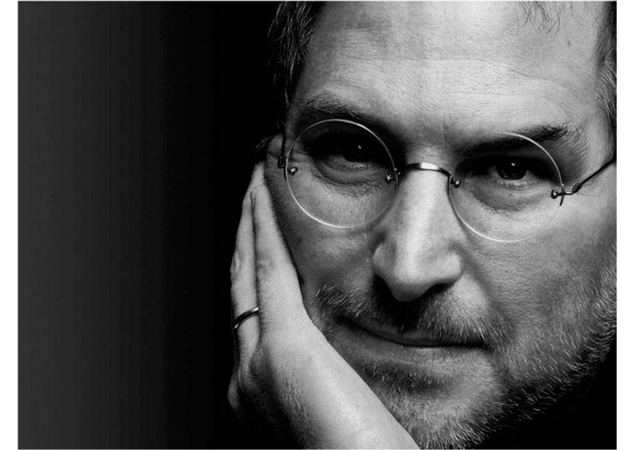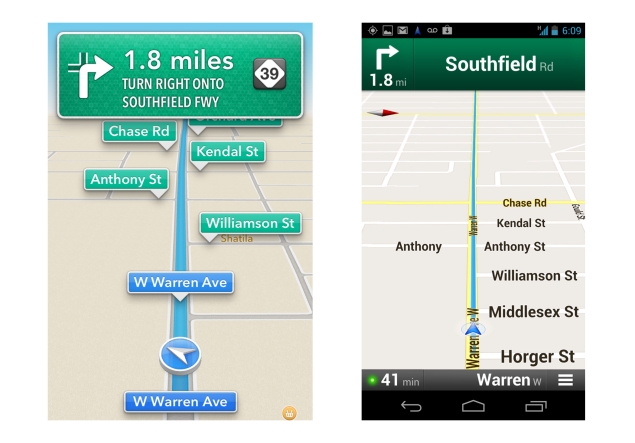Total Pageviews
179,062
Popular Posts
-
1. Deepika Padukone DeepikaPadukone, daughter of celebrated badminton player Prakash Padukone, isone of the most preferred model...
-
In yet another incident of crime against women in Haryana, a 30-year-old married woman was allegedly raped in Lakhan Majra village u...
-
Making crucial revelations in the Geetika Sharma suicide case, former Haryana minister and MDLR chief Gopal Goyal Kanda, who is facin...
-
Samantha Ruth Prabhu is an Indian film actress and model who appears in Telugu and Tamil films. Born to Malayali and Telugu parent...
-
Haryana's Sarva Khap Jat Panchayat, which has been at the forefront of demanding reservations for Jats in government jobs,...
-
Malvika Raaj played the younger version of Kareena Kapoor in Kabhi Khushi Kabhi Gham . She is now a full-time model. Malvika Raaj ...
-
Taobat Neelum Valley is a village about 38 km ahead of Kel. Taobat Neelum Valley is a fascination yet unexplored. Halmat, Tao Butt, J...
Followers
Home » Apps
Apple iOS 6 Maps review
Tuesday, October 9, 2012
Apple's new maps app came out the day I started a 2,243-mile road trip
through four states. As complaints about it trickled in and Apple's CEO
apologized, I was left wondering whether people were using the same app I
was.
Although it's not flawless or as good as Google's maps app on
Android phones, Apple's new offering on the iPhone got me where I needed
to go for the most part. I know many people will disagree with me, but I
even find it an improvement over the old app on iPhones because I now
get voice navigation and automatic re-routing.
I've used Google's
Android app since it was released three years ago. I don't own a car,
but I travel a lot. The app has proven crucial in getting me to
unfamiliar territories in New England and various Southern states from
Arizona to South Carolina.
Google brought to the phone the
spoken-aloud, turn-by-turn directions once limited to GPS navigational
devices from Garmin, TomTom and others. Make a wrong turn, and the app
automatically updates with new directions. Best of all, it's always been
free.
Until last month, Google was also behind the free, main maps app on iPhones.
But
that one didn't have voice navigation or automatic re-routing. Driving
with it meant swiping through pages of on-screen directions. A friend
missed a train in May as we overlooked a step and went the wrong way on a
highway, ending up back where we came from. A drive from Ann Arbor to
Lansing, Mich., took 17 steps, each with its own page. After Step 9, I
had to pull into a rest stop to memorize subsequent steps and avoid an
accident.
Apple wanted voice directions, too, and figured the only
way to get it was to build its own maps app and bump Google from its
perch as the default offering. It partnered with TomTom and shipped the
iPhone 5 with the new app. A software update out Sept. 19 made it
available on the iPhone 4S and the cellular versions of the latest two
iPad models.
I updated an iPhone 4S in a hotel room in Grand
Rapids, Mich., that night and was immediately impressed. It was a nice
touch to have turn-by-turn directions narrated by Siri, the familiar
female voice from Apple's virtual-assistant feature.
Then I started hearing the complaints.
I
agree with many of them. The Apple app didn't show as many businesses
and landmarks as Google's. Some appeared in the wrong location or were
mislabeled. The Apple app didn't offer public transit directions,
something crucial for New Yorkers like me. A friend I was visiting
toward the end of the two-week trip immediately complained that the app
looked different as she pulled it out for the first time.
Head to
head, the Google app for Android, which I used on a Samsung Galaxy Nexus
and a Galaxy S III, outperformed Apple's version in many respects:
- Google's app typically told me about turns a second or two quicker. Sometimes, I didn't hear from Siri until I got to the intersection, two lanes away from where I needed to be to make a right turn.
- I got better navigation on private roads with Google. At a shopping mall, Google guided me along the right driveways to get to JC Penney, while Apple got me to the general vicinity. Google also got me to the front door of my hotel in Ann Arbor, while Apple got me to the entrance of a complex that included other hotels, a gas station and retail stores.
- In Akron, Ohio, Siri had me turn left to get on a highway, while Google's app properly instructed me to take a ramp on the left. In Indianapolis, Google knew about a service road alongside Michigan Road, while Siri assumed I was on the main road and would have had me crash into a Chinese restaurant. In Charleston, W.Va., Siri told me to head northeast, as if I had a compass, while Google just told me to turn left.
- Besides public transit directions, Google offered options for avoiding tolls or highways while driving. It allowed me to choose continuous satellite images instead of animated maps, while Apple's app offered them only for route overviews, not for live navigation.
- While Siri's voice sounds much more human than the one Google used in its early mapping apps, Google now has a voice that makes Siri sound robotic by comparison. Google also was more sparing with words, which was good as long as I didn't get lost for lack of detail.
That
said, Apple's map offers 3-D views. That may sound like a gimmick, but
it presents the map in a way that mirrors what you're seeing through the
windshield. On Apple's map, the direction you're going is on top in the
regular view or toward the back in 3-D. Outside of big cities, Google
often has north on top, which can be confusing when driving east or
south.
Apple's maps are also more pleasant to view. Instructions
such as "turn right onto Pearl St." are in white against a green
background, similar to the signs you see on highways. Street names at
intersections are in a green rectangle, similar to actual street signs
at corners. Unlike Google's, Apple's app showed me the distance and time
remaining and an estimated time of arrival all at once, though I would
have appreciated larger text.
Apple's app was mostly dead-on in
getting me to my destination. The one big miss was when it had a winery I
was looking for about a half-mile east of its actual location. I went
to another instead.
But Google has made mistakes, too. It told me
to turn left to get to a lighthouse along the Straits of Mackinac
connecting two Great Lakes, even as the road sign in front of me pointed
to the right. Then again, Apple's app didn't even find that lighthouse
in a search.
Both apps gave me other questionable directions, even
though they got me there, which was what mattered most. At one point,
Google had me on a curvy one-lane residential street with little
visibility, even though a faster, safer road ran parallel to it. Apple's
directions to a roadside tourist trap had me take an exit four miles to
the south, only to return four miles north on smaller roads.
Bottom
line is no app is perfect. After all the complaints about Apple's app, I
downloaded a 99-cent iPhone app called MotionX GPS Drive. It got good
reviews and offered more features than either Apple or Google. But it
tried to lead me off the wrong exit in Ohio. Plus, all the extra
features diverted my eyes to the settings menu when I should've been
paying attention to trucks and, ahem, police cars around me.
One
of my favorite scenes from "The Office" television show is when clueless
boss Michael Scott drives into Lake Scranton because he was blindly
following GPS directions.
There will be mistakes, but it beats driving in a new place with nothing. You just need to use your common sense.
Apple's
app is far better than the one Google had when it first came out in
late 2009. In apologizing for an app he says "fell short" of Apple's own
expectations, CEO Tim Cook says the company will keep working to
improve it.
It's true Apple's app falls short of what Google now
offers for Android, but if all you have is an iPhone or an iPad, Apple's
new app will get you there just fine.
Clinging to the old,
voiceless app is like hanging on to your cassette tapes while the world
has moved on to CDs and digital downloads. I can't imagine driving
without hearing voices.
Labels
Acne
Alvin-Tan
Amy-Jackson
Anjali-Damania
Apps
AR-Rahman
Australia
Bagh-e-Jinnah-Park-Lahore
Bagh-Ibn-e-Qasim
Barcelona
Bike
BJP
Budget
Cameras
Cave-Temple-Indonesia
Chitrangada-Singh
CSK
Dark-Skin
Dead-Acacia-Trees
Deals
Dia-Mirza
Economy
Entertainments
Evelyn-Sharma
Exclusive
Food-Drink
Gaming
Gauhar-Khan
Gold-Price
Haripriya
Health
Home-Entertainments
Hotels
Hrithik-Roshan
Internet
Jobs
Kajal-Agarwal
Kangana-Ranaut
Kareena-Kapoor
Katrina-Kaif
Katy-Perry
Kingfisher
Laptops
Life-Style
London
Madhurima
Malala-Yousafzai
Malvika-Raaj
Manmohan-Singh
Maruti-Alto
Mathew-Hayden
Mobiles
Mouli-Ganguly
Moustafa-Ismail
Narenra-Modi
Obama
Oresund-Bridge
Pataudi-Palace
Piedra-Del-Penol
Priyanka-Chopra
Rahul-Gandhi
Rape
Real-Estate
Recipes
Roshni-Chopra
Sachin
Sachin-Tendulkar
Safari-Storme
Saif-Ali-Khan
Samantha
Sapporo-Snow-Festival-Japan
Sarah-Jane-Dias
Sensex
Shazahn-Padamsee
Shruti-Hassan
Social-Networking
Socotra-Island
Sony-VAIO
Sports
Steelers
Student of the Year
Sulagna-Panigrahi
Surveen-Chawla
Tablets
Taobat-Neelum-Valley
Technology
Telecom
Tragedy
Travel
Undersea-Tube-Tunnel
Vivian-Lee
Whitehaven-Beach
Whitsunday-Island
Yami-Gautam
Yash-Chopra
Yuvraj-Singh
Zarine-Khan



















Comments[ 0 ]
Post a Comment